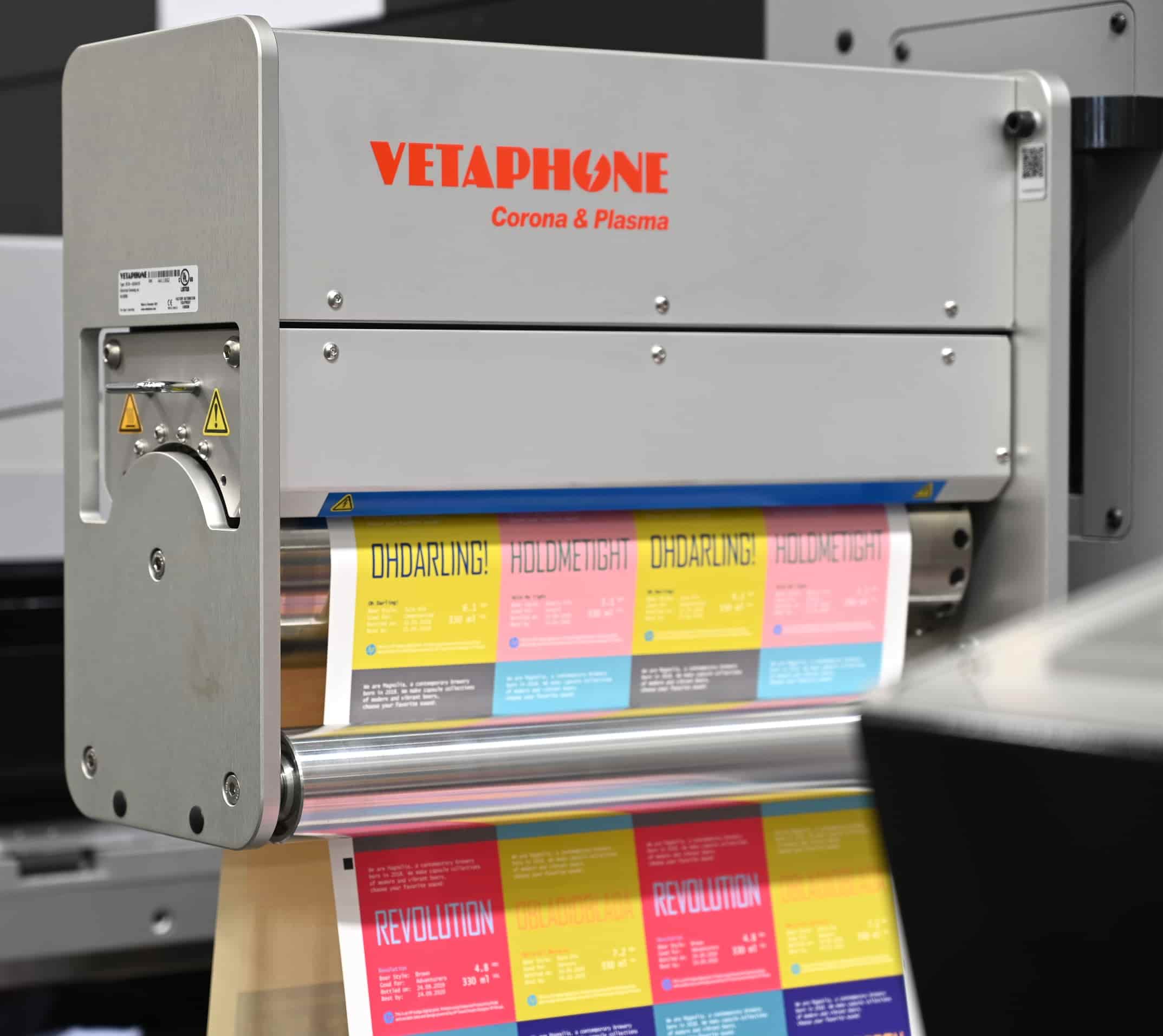While digital printing was a long way into the future when corona treatment was first invented and developed to help printers cope with the booming demand for printed plastics in the 1950s, the principle of combating surface tension to allow inks and lacquers to adhere to a range of uncooperative substrates, is just as relevant in today’s digital age. We asked our Chief Sales Officer, Kevin McKell, to discuss and explain the requirements.
Does digital printing place different demands on surface treatment?
With the exception of the inline primers that certain manufacturers recommend, there are no other special surface treatment requirements for substrates that are printed digitally, whether by toner or inkjet process. In practice, the vast majority of substrates that can be printed offset, flexo, or gravure, can also be printed digitally. It’s not the print process that determines the need for and level of surface treatment but the substrate itself and its ability to accept ink or lacquer without smudging.
Aren’t digital inks different to offset and flexo?
Yes, they contain plastic polymers and oil, which naturally have a very low surface tension, and therefore poor adhesion, which can pose problems for any post converting process. And, the higher the ink coverage, the worse the situation becomes – but corona treatment secures the bonding.
Doesn’t digital printing require pre-treated stocks?
It’s well accepted that digital presses, whether toner or inkjet, require a pre-conditioning of the substrate before it’s printed – and this can be an expensive process, especially as the quality of this pre-treatment can vary. We are currently involved in a series of extensive lab tests to evaluate how we can overcome the need for printers to buy pre-treated stock and provide a more cost-effective and reliable solution.
Are there examples of Corona treatment in action on digital presses?
There are many. If you look at any number of HP installations where there is an ILP unit, you will find that the user applies corona before priming, and again after printing, and in some cases, once again to seal the UV coat before other decorative processes are added. Corona treatment builds in a degree of security as far as quality and performance are concerned.
How do I know which surface treatment is right for the jobs I’m printing digitally?
To simplify matters, I’ll split the process into three clearly definable requirements. First, there is the need for simple corona treatment, and this applies to virtually all narrow web press applications. It will typically require a corona unit to deliver a power rating of 1.5 – 2.0 kW and provide excellent performance on standard substrates run off at low to medium speeds. Generally, this is suited to the majority of digital press applications today.
Digital print technology is changing continually – how will wider and faster presses change the surface treatment requirements?
This falls into what I call the second section, which has been created by the development of new and more difficult substrates. These are run off on the latest generation of presses that have been optimised by manufacturers for high speed production. These factors place an increased demand on the corona unit to deliver the correct dyne level, which typically needs to be rated at 3.0 – 5.0 kW. To understand this concept, think of the similar situation with UV curing, where dwell time under the lamp, defined by power rating and running speed, are critical to achieving a complete cure.
Is Corona the answer to all surface treatment requirements?
Most, but not all. What I call the third section relates to those substrates that have been developed to produce ‘unique’ labels, typically using special inks and lacquers, lamination, multi web applications and other techniques to produce sophisticated products. The chemical constituents of these substrates require a chemical treatment process as well as a physical one – and in these instances plasma treatment is necessary to ensure bonding. Plasma should not be considered as a replacement for corona, more as a logical development of technology to keep pace with the requirements of more sophisticated materials and processes. At present, this technology is outside the requirements of digital printing – but in the future, who knows?
What sets Vetaphone Corona apart from the competition?
The real secret of corona treatment is managing the power output, and this is where Vetaphone has a USP! Controlled power is essential in surface treatment, so our generators’ ability to proportion the output power from 1 – 200kW related to line speed in a smooth and uniform manner removes the risk of pinholes in the substrate. Power regulation uses the ultra-fast Pulse Width Modulation (PWM) technique. This is easy to manage via the iCC7 multi-lingual operator panel that allows remote control from the central line console. All the electronics in an iCorona generator are modular for fast exchange and reduced downtime.
What’s your advice if you’re unsure about the right way to go with your digital press?
As the inventor and pioneer of surface treatment Vetaphone is best placed to offer the widest scope of technology to meet any of today’s requirements from the simple low-power unit to the more complex C8 station that we have recently launched for high-power corona treating at high speed. But, and this is the important bit, unique to Vetaphone’s corona system is the ability of the generator to switch between read-out modes that display either power output in kW, or energy delivered in Watt x min/ft². It’s no good having power without the ability to control it!

